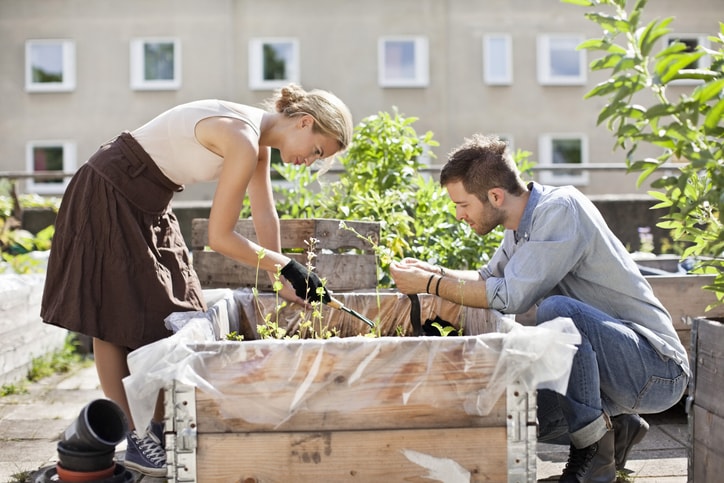Friday, March 10, 2023
Planting and harvesting fruits and vegetables at home not only promotes a healthier and tastier diet; it also contributes to reducing CO2 in the atmosphere and enriching local biodiversity.
By Pablo Suarez
Throughout history, gardens have always been associated with villages, with enclaves surrounded by nature where these small crops find a niche in the heart of single-family houses. In fact, the practice of planting vegetables to later be used for cooking has become established over the years as an eminently rural custom traditional to agricultural areas, which have been historically dependent on a certain degree of self-sufficiency due to logistical or access issues.
However, new urban planning trends, in the context of the objectives of our time—most of which intersect at environmental regeneration—are noted for the strengthened relationship between cities and nature. Science tells us that cities can only be truly sustainable if we give space for vegetation among the concrete forests. It is here where urban gardens, where urbanites return to growing and tending to their food at home, have been revealed as an environmental solution with multiple benefits, also for individuals and society.
The first advantage of a person growing part of the food they use in the kitchen at home is reduced intensive agriculture, an approach that has grown in recent years to feed an increasingly consumerist population and harms both the land and the surrounding communities. The overexpansion of arable land takes space from fauna and flora and disturbs the natural balance. In addition, this intense crop growing also leads to soil degradation that directly impacts the conservation of ecosystems. By turning this situation around and converting city dwellers into small farmers, the volume of demand is reduced and balance is restored to some extent.
The increase in the quality and taste of food is coupled with the fact that local products are consumed. So there is no need to travel to bring the food to the table. These considerable emission savings are complimented by avoiding the use of fertilizers or pesticides, which are a source of pollution for the land and ecosystems.
In this way, each product consumed that is generated directly by citizens themselves is one more grain of sand in the fight against climate change. A fact that has not gone unnoticed by public administrations, and more and more cities are promoting the creation of spaces in buildings and properties where these small pockets of nature can be installed. An urban garden can be located in small unpopulated plots such as balconies, shelves, and terraces. In this regard, Barcelona, Madrid and Seville are some of the Spanish cities where, through municipal programs, initiatives of this type have been implemented to promote agricultural self-consumption. In fact, in Madrid, there are more than 20 spaces set up for this function thanks to initiatives such as the Municipal program of urban gardens.
Each garden is the creation of a tiny ecosystem that, added to the rest, generates a natural space that does not go unnoticed by different species. This is the case of pollinating insects, which find in these places a green refuge that is increasingly scarce in cities. This contributes to the strengthening of these species, which are essential to maintain the natural balance and whose survival has been threatened in recent decades,while also improving the biodiversity of certain areas, since pollination also serves to recover plant species dependent on this process. A recovery that, to bring it about, must go hand in hand with urban reforestation policies that trigger the return of more species.
These small vegetated areas also have a direct influence on aspects such as improved air quality, resulting from plants' photosynthesis process; noise reduction, given vegetation's capacity to absorb sound; and improved energy efficiency as a result of better insulation and heat conservation—especially when located on rooftops—and temperature regulation.
Moreover, by becoming directly involved in this form of micro-agriculture, people come into direct contact with nature, which is sometimes difficult to do in cities. In fact, more and more experts agree that an urban garden at home is the ideal project for anyone in need of tranquility, since relationships with nature reduce stress considerably. A study published in the prestigious journal Frontiers of Psychology concluded that spending at least 20 minutes a day walking or sitting in a natural environment will significantly reduce stress hormone levels.
Urban gardens are an unstoppable trend that, by all accounts, is here to stay because their advantages are becoming more and more widely accepted. With the tremendous growth of cities and the depletion of the planet's resources, nature's recovery of certain spaces is not only a reason to rejoice: it is, above all, a necessity.
¿Te ha parecido interesante?





